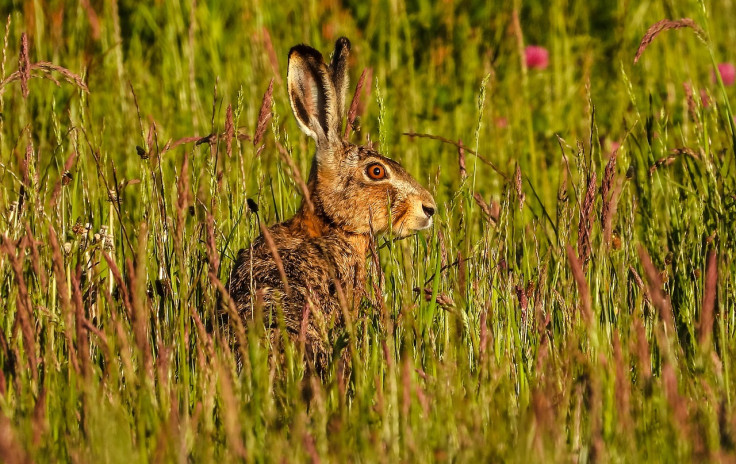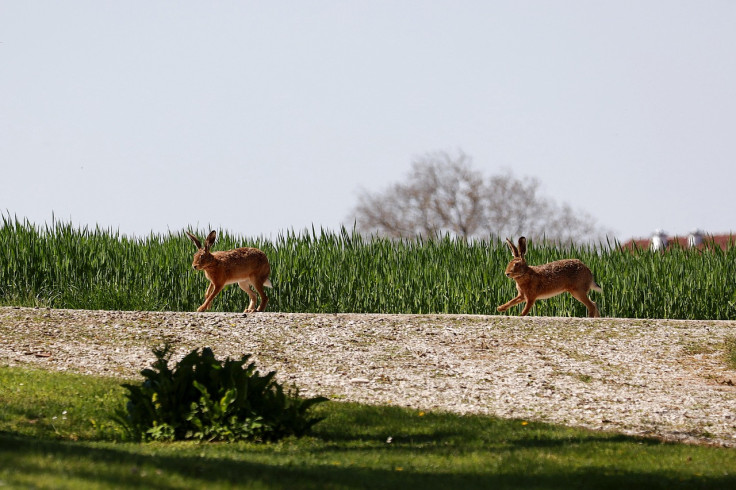Are Colorado Rabbits with Tentacles Dangerous To Dogs And Other Pets? Here's What Scientists Are Saying
For most household pets, including dogs and cats, there's no reason to worry.

In the US, rabbits are a common sight in many Colorado backyards, but recently, something about their appearance has left the residents alarmed.
According to reports, in several parts of northern Colorado, residents have spotted wild rabbits with tentacle-like growths protruding from their faces. Some have described them as horns or twisted quills; others have been surprised enough to think the animals were seriously diseased or even injured.
The bizarre appearances have sparked questions and concern, particularly among pet owners who are concerned about potential contact or risks to their animals. So are these rabbits actually dangerous? And what's causing the unusual changes in them? Here is what wildlife experts are weighing in.
The Virus Behind the Tentacles
According to experts, these bizarre growths are caused by a virus known as cottontail rabbit papillomavirus, or Shope papilloma virus. The virus leads to the development of black, wart-like nodules, usually around a rabbit's head, mouth and neck. In some cases, experts say that the growths become elongated and take on an almost alien look.
🚨 BIZARRE OUTBREAK IN COLORADO 🚨
— Janice Nodine (@janice_nodine) August 12, 2025
Rabbits in Fort Collins are turning up with black, tentacle-like growths sprouting from their heads.
Experts say it’s caused by Shope Papillomavirus — a condition the animals carry for life. Officials insist it’s “not dangerous to humans” …… pic.twitter.com/cOUmC6lQlj
The condition tends to surface more frequently in summer, when insect activity increases. That's because the virus spreads through biting insects, including mosquitoes and fleas, which are common pests during the warmer months.
Experts have also noted that this isn't a new phenomenon. The virus has been documented in states like Colorado, South Dakota and Minnesota, often following a similar pattern: more rabbits, more bugs, more cases.
Are Pets at Risk?
Naturally, the rise in sightings has prompted concerns among pet owners. Fortunately, for most household pets, including dogs and cats, there's no reason to worry.
According to Kara Van Hoose, a spokesperson for Colorado Parks and Wildlife (CPW), the virus is specific to rabbits and does not cause disease in other species.
That said, there is one important exception: domestic rabbits. Experts believe that if you own a pet rabbit, particularly one that lives or plays outdoors, there is a potential risk. Domestic rabbits can catch the virus either through exposure to infected wild rabbits or the insects that carry it.

In pet rabbits, the condition can be more severe and even lead to cancer if left untreated. Van Hoose recommends that anyone who suspects their rabbit may be infected should consult a vet right away. As a precaution, pet rabbits should be kept indoors if wild rabbits with visible growths are active in your area.
Do the Infected Rabbits Suffer?
Despite their dramatic appearance, most wild rabbits infected with the virus don't show signs of serious illness. Many continue to eat, hop and behave normally.
In most cases, the growths eventually fall off or shrink once the rabbit's immune system fights off the infection. According to CPW, it is not advised to euthanise infected wild rabbits unless the growths significantly interfere with their ability to eat or see.

Meanwhile, there's currently no cure or vaccine for the virus, either in the wild or in pets, which means prevention, especially through insect control and avoiding contact, is key.
What to Do If You Spot One
If in any scenario anyone comes across a rabbit with visible black protrusions, the best approach is to leave it alone. CPW urges people not to feed, approach or attempt to help the animal, no matter how unusual it looks.
'If someone sees a rabbit with the black tumours on its head or neck, it is not a concern for Animal Control,' Julie Lindstrom, a supervisor at Sioux Falls Police Animal Control, told the media.
While the words like 'tentacles' and 'darts' associated with these animals might conjure up terrifying assumptions, the reality is far less dramatic. According to experts, what people are witnessing is a natural part of wildlife biology.
© Copyright IBTimes 2025. All rights reserved.




















